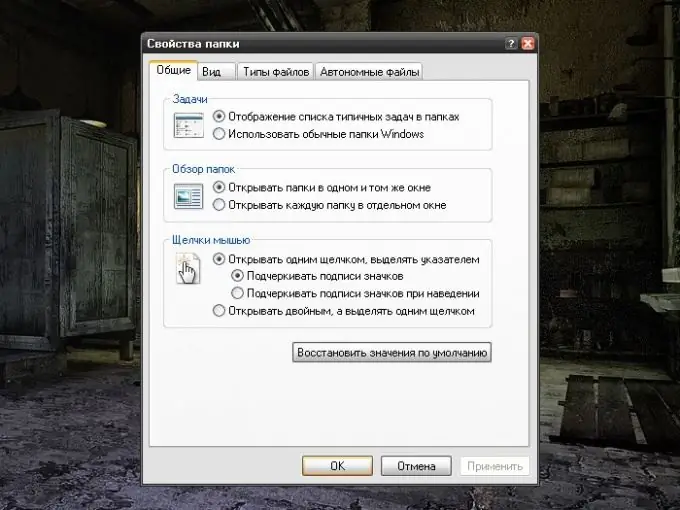How the folders will be opened on the computer, how they themselves and the files they contain will be displayed - it all depends on what settings are selected for the folders. All the options you want can be configured in the Folder Options dialog box. To do this, you need to perform several steps.

Instructions
Step 1
Open the "Folder Options" window. This can be done in several ways. Open any folder from any directory on your computer. On the top menu bar, select Tools. In the drop-down menu, left-click on the line "Folder Options" - the required dialog box will open. Another way: open the "Control Panel" via the "Start" button. In the Appearance and Themes category, select the Folder Options icon. If the "Control Panel" has a classic look, the desired icon is available immediately.
Step 2
In the window that opens, on the "General" tab, configure the settings for displaying and methods of opening folders on your computer. If in the "Tasks" section you have a marker in the "Display a list of typical tasks in folders" field, the area of your open folders will be visually split in two. On the right side there will be icons of files contained in folders, on the left side - tasks that can be performed for these files (rename, copy, delete, and so on). A marker in the "Use regular Windows folders" field means that the task field will be absent.
Step 3
In the "Browse folders" and "Mouse clicks" sections, set the parameters for how folders are opened: when you successively move from folder to folder, all actions can take place in the same folder, or each folder can be opened separately, and the folders themselves can be opened, or with one click or double click. For example, the path My computer / Local drive C can be done in one folder, or you will have two folders open at once: the first "My computer", the second - "C: /".
Step 4
Move to the "View" tab. In the Advanced Options section, configure settings to display folders and files within them. Hidden and system files and folders can be visible and invisible, the file name can be written in full or have only a name, and the extension will be hidden. Place a marker in the fields that suit your needs.
Step 5
Switch to the "File Types" tab. Here you can view the registered file types, add additional file extensions if necessary, or set new parameters for existing ones. If you do not understand what this is for, it is better not to change anything on this tab. After you customize the folder properties, click the Apply button for the new settings to take effect, and the OK button or the X in the upper right corner to close the window.






